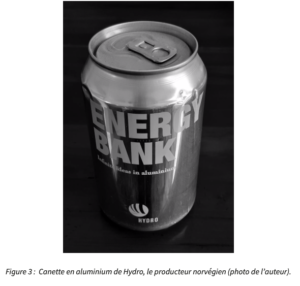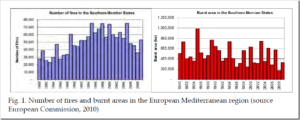by Euractiv Network, July 19, 2019
The Capitals brings you the latest news from across Europe, through on-the-ground reporting by EURACTIV’s media network. You can subscribe to the newsletter here.
///
The Polish government has said ensuring a “good post” in the next European Commission was a precondition to support Ursula von der Leyen to become the EU executive’s chief, according to deputy Prime MinisterJacek Sasin and government spokesman Piotr Müller.
EURACTIV Poland has been reporting for several weeks that Warsaw may be interested in a post related to energy issues, and Sasin confirmed the government’s aspirations for the energy post in an interview with TVN24.
Read also:
At the beginning of June, WysokieNapiecie.pl, a website which covers energy issues, revealed that Competition Commissioner Margrethe Vestager and liberal spitzenkandidat offered the Polish government the post of commissioner for energy in return for support in her fight for the top EU job. The only condition was to find a woman.
The name of Poland’s minister for technology and entrepreneurship Jadwiga Emilewicz, who is sceptical towards coal, has repeatedly popped up.
Vestager is now out of the race but things have not changed much: Polish government officials are touting Emilewicz and demanding the energy portfolio, and Vestager will remain in the Commission as a vice-president, which may give her power to influence the composition of the new executive.
In an interview with EURACTIV.com earlier this week, Foreign Minister Jacek Czaputowicz said Poland was looking for an “economic” post. “We know how to do it, we are developing quickly, and we have one of the highest paces of economic development.
…
by P. Gosselin, June 2, 2019 in NoTricksZone
May normally is a month that sees rapid snow melt in Alps. But this year May was an unusually cold month across Central Europe and parts of the Alps saw heavy snow accumulation.
A week ago, on May 25, BR public broadcasting reported here how May snow levels at Germany’s tallest peak, Zugspitze, reached a 20-year high at just over 6 meters of depth. The article wrote that experts thought the depth would not rise further.
But that turned out to be wrong.
Highest level since February, 1981
Four days later, on May 29, another 35 cm were added and pushed the depth to 6.40 meters, according to wetteronline.ch here. the website wrote: “Zugspitze: Never so much snow since 1981.” The website added that the snow depth there was “higher than it has been since February 1981.”
What follows is a webcam image of the Zugspitze peak from May 29th:

…
by Prof. Samuel Furfari, 16 mai 2019, in ScienceClimatEnergie
La Commission européenne a publié dès le début de l’année 2019 son rapport sur l’évolution des prix et coûts de l’énergie en Europe. On peut y lire que l’étude de ces coûts devrait conduire à « veiller à̀ ce que les entreprises ne soient pas désavantagées ni écartées » et que « les prix de détail (réels) dans l’Union sont plus élevés qu’aux États-Unis, au Canada, en Russie, en Chine et en Turquie, mais inférieurs à̀ ceux observés au Japon et au Brésil. » Le graphique suivant (Figure 1) illustre bien le fait que les industries européennes sont pénalisées par rapport aux entreprises d’autres pays qui sont des concurrents directs sur les marchés internationaux, y compris pour nos importations. Le rapport ajoute pudiquement, sans y insister que « l’évolution des prix de l’électricité est dominée par les taxes et prélèvements ».
…

by Charles the moderator, March 29, 2019 in WUWT
Chalmers University of Technology
A sixth of all emissions resulting from the typical diet of an EU citizen can be directly linked to deforestation of tropical forests. Two new studies, from Chalmers University of Technology, Sweden, shed new light on this impact, by combining satellite imagery of the rainforest, global land use statistics and data of international trade patterns.
“In effect, you could say that the EU imports large amounts of deforestation every year. If the EU really wants to achieve its climate goals, it must set harder environmental demands on those who export food to the EU,” says Martin Persson from Chalmers, one of the researchers behind the studies.
The link between production of certain foods and deforestation has been known before. But what Martin Persson and Chalmers colleague Florence Pendrill have now investigated is the extent to which deforestation in the tropics is linked to food production, and then where those foods are eventually consumed. In the first study, they focused on how the expansion of cropland, pastures, and forestry plantations has taken place at the expense of the rainforest.

Emissions sources for deforestation-related carbon dioxide emissions are diverse and vary by region. Emissions embodied in production are shown for each commodity group within each region. A region’s width on the x-axis corresponds to the embodied emissions produced in that region, while the y-axis shows the share of emission attributed to each commodity group within each region, implying that the rectangles within the plot are scaled according to the emissions embodied in each region-commodity combination. The percentages within the rectangles indicate the share of the total embodied emissions; 2.6?gigatonnes of carbon dioxide due to tropical deforestation during the period 2010-2014.
Credit: Florence Pendrill, Chalmers University of Technology
…
by P. Homewood, March 28, 2019 in NotaLotofPeopleKnowThat
1. Introduction Fires are an integral component of ecosystem dynamics in European landscapes. However, uncontrolled fires cause large environmental and economic damages, especially in the Mediterranean region. On average, about 65000 fires occur in Europe every year, burning approximately half a million ha of wildland and forest areas; most of the burnt area, over 85%, is in the European Mediterranean region. Trends in number of fires and burnt areas in the Mediterranean region are presented in Fig. 1. Recent analyses of the available data in the European Forest Fire Information System (EFFIS) show that over 95% of the fires in Europe are human-induced. The split of causes shows that most of them are due to misuse of traditional practices of straw burning of shrub-burning to recover areas for cattle feeding. Although European countries have collected information on forest fires since 1970s, the lack of harmonized information at the European level has prevented a holistic approach for forest fire prevention in the Region. The European Forest Fire Information System (EFFIS) has been developed jointly by the European Commission (EC) services (Directorate General Environment and the Joint Research Centre) and the relevant fires services in the countries (forest fires and civil protection services) in response to the needs of European bodies such as the Monitoring and Information Centre of Civil Protection, the European Commission Services and the European Parliament. EFFIS is a comprehensive system covering the full cycle of forest fire management, from forest fire prevention and preparedness to post-fire damage analysis (see Fig. 2). The system is providing information to over 30 countries in the European and Mediterranean regions, and receives detailed information of forest fire events from 22 European countries. It supports forest fire prevention and forest fire fighting in Europe through the provision of timely and reliable information on forest fires.

by J.P. Schaeken Willemaers, 29 mars 2019 in ScienceClimatEnergie
La transition énergétique est abondamment traitée dans les médias, souvent de manière univoque (ce que d’aucuns appellent le débat confisqué) en ignorant les conséquences socio-économiques. Dans ce papier, nous nous limiterons à sa composante électrique.
Rappelons tout d’abord que la finalité première d’un système électrique est d’assurer l’adéquation entre la production et la consommation d’électricité.
Il va de soi, quoique ce ne soit pas évident pour tout le monde, qu’il faut anticiper les adaptations nécessaires du système avant de procéder à la mise en œuvre du changement. Dans ce processus, l’analyse de l’impact sur la transmission et la distribution d’électricité et sur la continuité des services ainsi que la réalisation des travaux correspondants requis, sont prioritaires. Or aucun gouvernement ayant décidé de réduire drastiquement les émissions de gaz à effet de serre (GES), ne s’est soucié des conséquences de leurs décisions. Ceci explique les déboires des pays qui se sont précipités dans une stratégie de pénétration accélérée de production d’électricité renouvelable intermittente.
…
by Deutsche Press Agentur, September 28, 20108 in GWPF
Contrary to what has been announced, Cañete has not submitted the proposal to the EU member states, the German Press Agency in Brussels has learned. The idea was met with opposition by, among others, German Chancellor Angela Merkel and the German industry. Other EU countries also rejected it. Global climate policy is in crisis since US President Donald Trump quit the Paris climate agreement of 2015.
See also here
by P. Shrestha, July 27, 2018 in EnergyLiveNews
The European Union plans to import more liquefied natural gas (LNG) from the US to diversify its energy supply.
European Commission President Jean-Claude Juncker said more terminals will be built in the region during his visit to the White House this week.
He met with President Donald Trump yesterday to launch a new phase in the relationship between the US and the EU, including strengthening their co-operation on energy.
…
See also in CNBC
La géologie, une science plus que passionnante … et diverse




